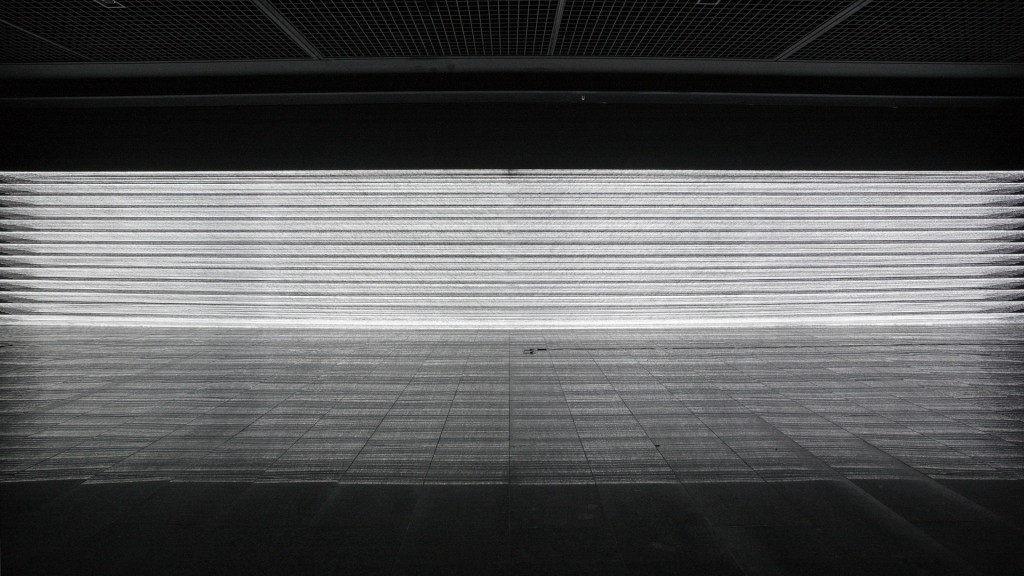
Jeju Museum of Art, Jeju KR
Nylon string, projection
16,000mm x 2,500mm x 10,000mm [dimensions variable]
Kimchi and Chips' previous work Line Segments Space fills the gallery with a web of dynamic imagery. At the end of last year, the Jeju Museum of Art commissioned a new version of 「Line Segments Space, 2013」 for the exhibition From Moment To Moment. The museum designed by Korean architect Mijung Kim is a panorama of reflective floors and square concrete apertures, and these architectural characteristics demanded a reconsidering of the work and the principals by which it is arranged, leading the artists into a different path and ultimately creating a new work, 483 lines.
From World War II up until the recent end of analogue broadcasts, decades of living imagery had been constructed using the NTSC standard. This standard represents a moving image frame as 483 lines of modulated light stacked from the top to the bottom of a television screen, within each line there is an analogue continuum, like the groove on a record player. From Nam Jun Paik to the moon landings, pictures were being represented, archived and seen within this format, until the line made way for the pixel and the digital video revolution.
The artwork 483 lines magnifies this analogue video picture until it is 16 meters wide, and then folds this image several times so that it fits vertically into the gallery space, therein adding oscillations of depth into the image which can be activated by 'tuning' the projected video to match these waves. At this scale, each line of video can be individually inspected as its own agent beyond its contribution to the total image. This follows a common motif within the artists work, to create 2 scales of experience, this time the beating panoramic imagery contrasts the delicate physicality of the fine thread elements.
The strictly arranged lines can be illusionary, creating a confusing architecture of horizons, whilst the video played through it displays a parallel past, present and future.
483 라인은 실을 이용하여 작업하는 설치 작품 중 하나이다. 한 가닥마다 5kg의 장력이 부여된 총 483개의 케블라 실들은 균등한 간격의 평행을 유지하며 16미터를 가로질러 설치되고, 컴퓨터 시스템은 483개의 모든 실들을 스캔한 후 그 위에 정교히 이미지를 맵핑한다.
아날로그 TV 방식 NTSC가 한 프레임 당 483개의 주사선을 그리며 이미지를 완성하는 것에서 아이디어는 시작되었다. 작품 <483 라인>에서 아날로그 TV 속 483개의 주사선은 케블라 실로 대체되고, 스크린의 디스플레이 형식은 공간을 가로지르는 물리적 형태의 디스플레이로 전환된다.
16미터의 거대한 실 설치물 자체와 그 위로 정교히 맵핑되어 흐르는 영상은 마치 과거에서 현재로, 현재에서 미래로 혹은 한 차원에서 다른 차원으로 이동하는듯한 몽환을 선사하며 관객의 시선을 사로잡는다.
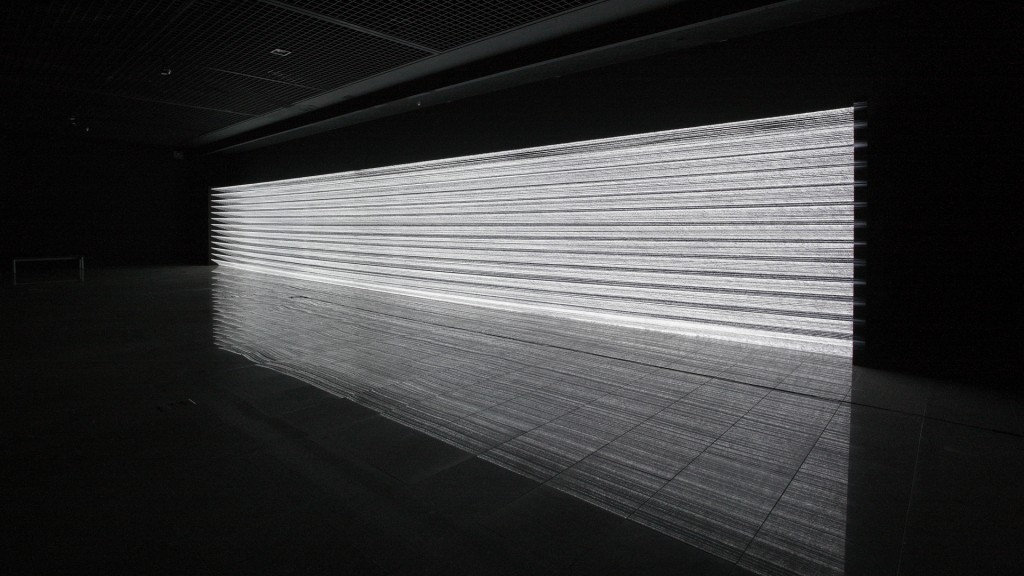
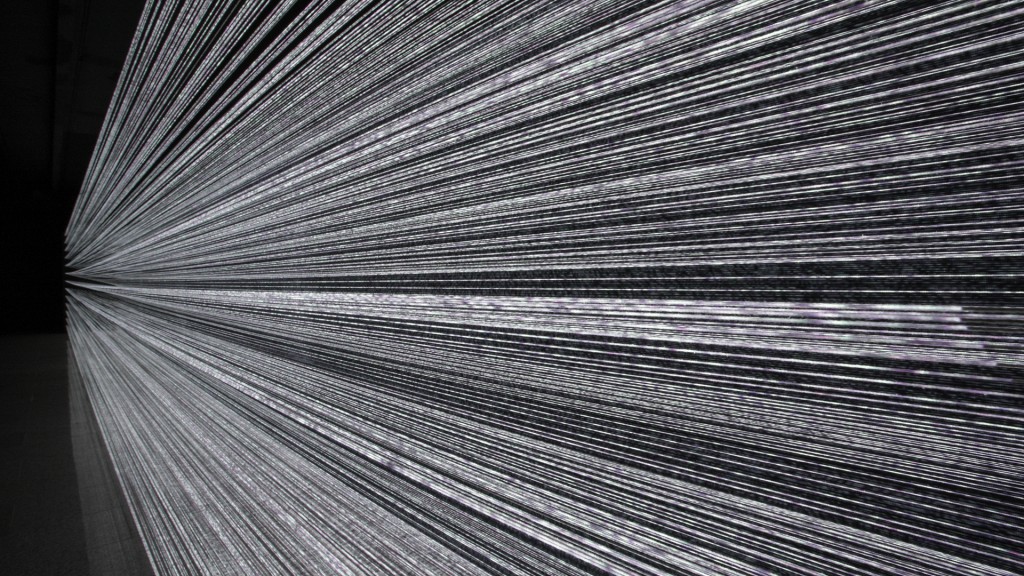
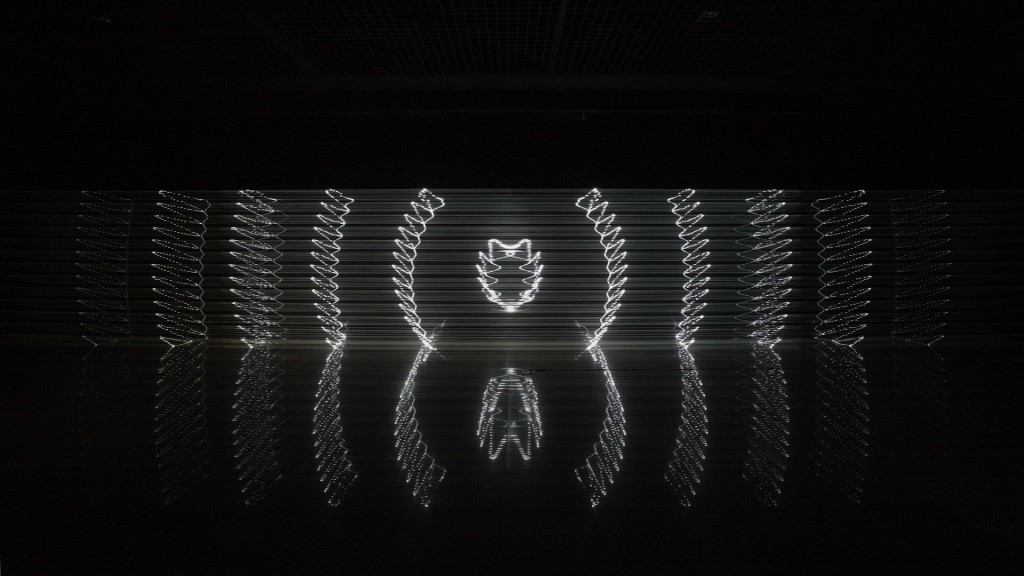
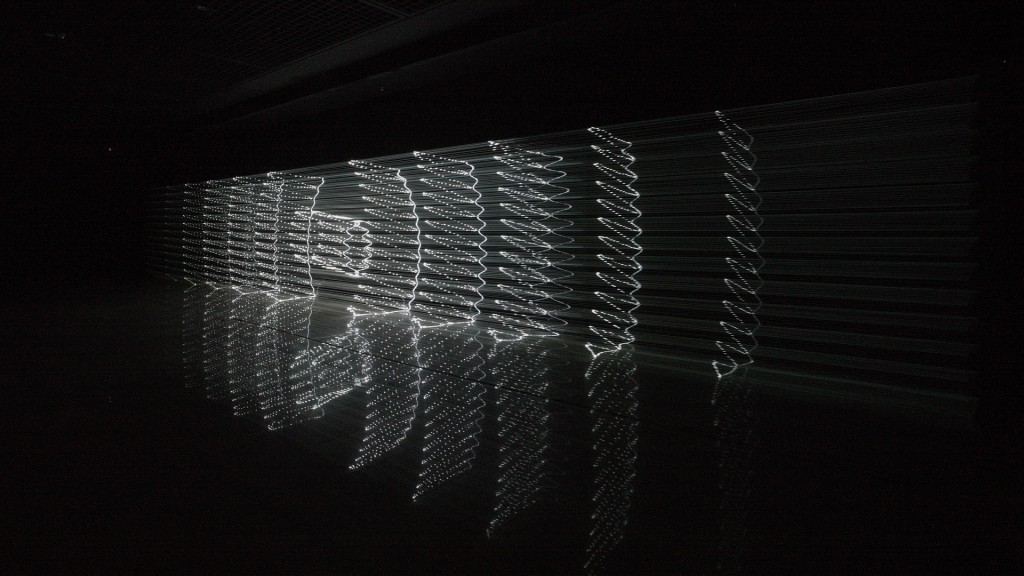
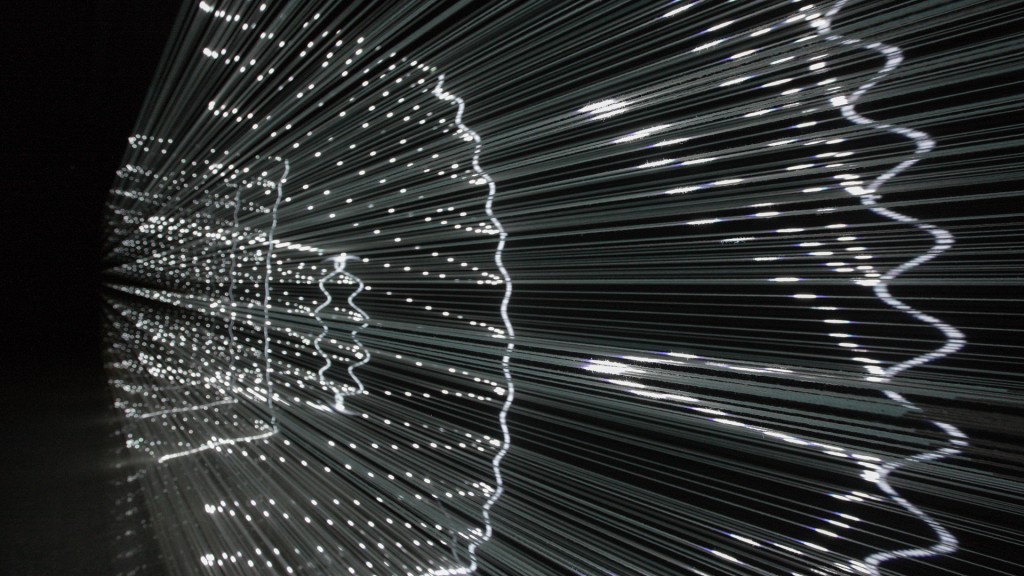
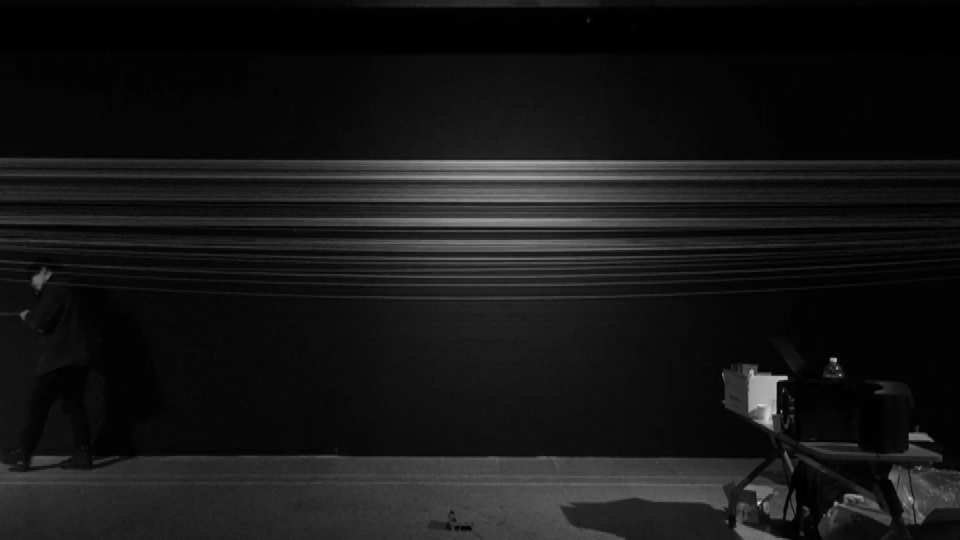
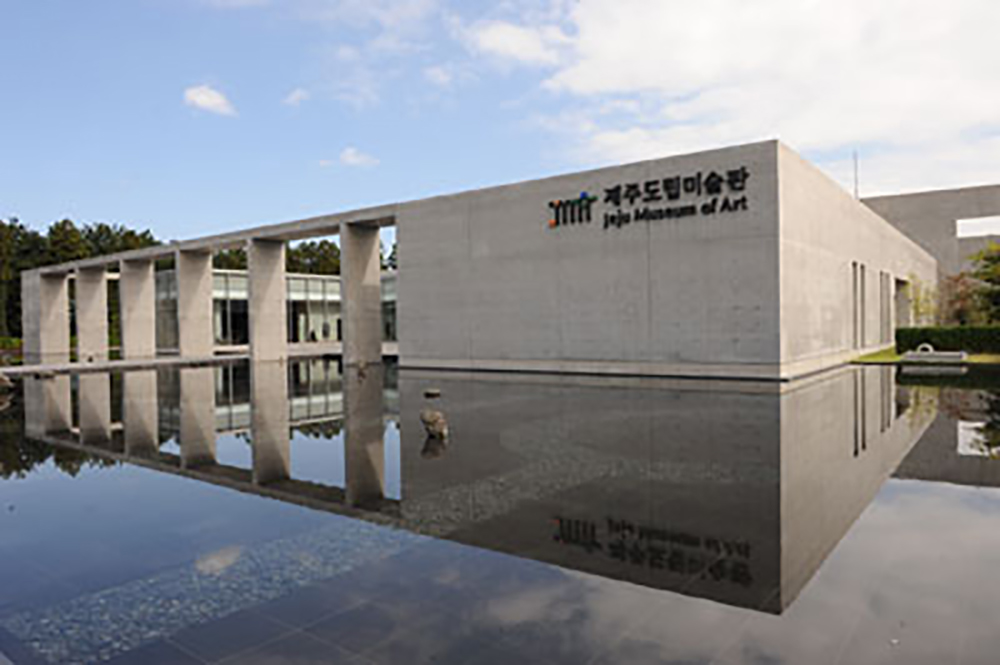
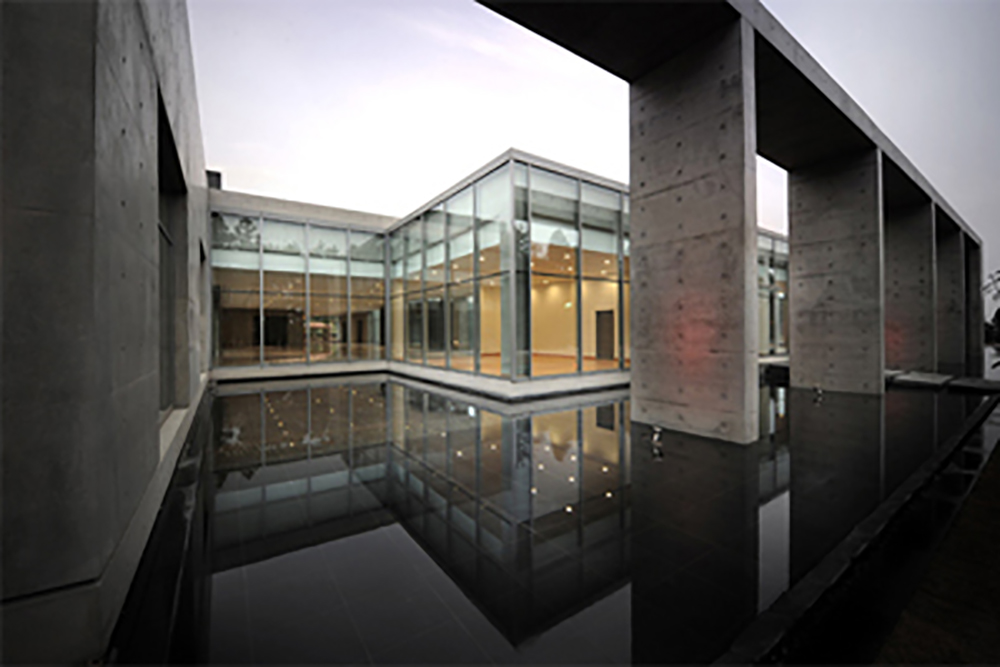
Sound design by
Abdulla Rashim
Ligovskoï
Production design by
Onjeong Rhee
Artur Musalimov
Photography by
Byungkook Kim
Videography by
Kimchi and Chips
